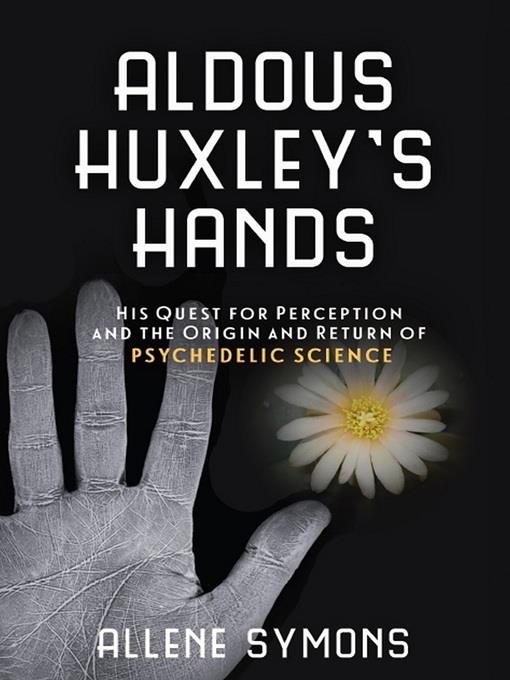
Aldous Huxley's Hands
His Quest for Perception and the Origin and Return of Psychedelic Science
کتاب های مرتبط
- اطلاعات
- نقد و بررسی
- دیدگاه کاربران
نقد و بررسی

October 26, 2015
In this dizzying chronicle of post-WWII psychedelic experimentation, Symons (Nostradamus, Vagabond Prophet) explores the unlikely friendship between her father, Howard Thrasher, and Aldous Huxley. In the 1950s, Thrasher had an unconventional hobby of photographing hands, which he futilely insisted contained a code that could reveal patterns unique to the mentally ill. Symons reflects upon the interest piqued by her father’s odd photographs, which he believed hinted at a diagnostic indicator for schizophrenia—his suggestion of a genetic link for the disorder was flatly rejected at the time but was later reluctantly endorsed. She also delves into Huxley’s simultaneous quest to study “psychedelic science” years before Timothy Leary urged a generation to “turn on, tune in, drop out.” Acceptance of Huxley’s “fearless curiosity” about psychic phenomena would also come long after his death in 1963, Symons notes. What stands out in this crammed book is the touching way Symons recalls a particular time in history—and the men who helped shape its science—through conversation with her elderly father. The book works as a “memory duet” of Thrasher’s extraordinary research and Symons’s recollection of
the hundreds of hands her father meticulously studied and photographed. Photos. Agent: Dana Newman, Dana Newman Literary.

September 15, 2015
Symons (Communications and Media Studies/Santa Ana Coll.; Nostradamus, Vagabond Prophet, 2011, etc.) explores Aldous Huxley's quest to expand consciousness. In the 1940s and '50s, the author's father, Howard Thrasher, an aircraft engineer, pursued what he called the Hand Project: photographing human hands and examining them for insights into personality traits and even mental illness. Like phrenologists feeling bumps on the skull, he believed the hand was "a mirror of the mind." Symons was surprised to discover a photograph of Huxley's hands among her father's collection and even more surprised to learn that Huxley had invited Thrasher to his dinners and gatherings, which sometimes featured seances and/or hypnosis. Always interested in "fringe-of-science ideas," Huxley, his nephew once remarked, "liked the company of large minds with obsessions." Huxley's obsessions included consciousness-altering experiences through the use of psychedelic drugs. With his colleague, physician Humphry Osmond, he conceived Outsight, a project whose goal was "to advance human consciousness and...draw attention to a chemically induced way of accessing some higher dimension." To gain credibility with potential funders-the Ford and Rockefeller foundations rebuffed him-he envisioned gathering a group of "gifted people" willing to take the drug and form "a kind of mescalinized think-tank." Meanwhile, he wrote about his experiences in The Doors of Perception (1954), from which Symons draws, along with correspondence and interviews. Although his visionary quest has been well-known through his writings, Symons creates candid portraits of Huxley and his circle-his wife, Maria, who ministered to his every need, though dying of cancer; Gerald Heard, founder of a 300-acre spiritual retreat in rural California; and the hardworking Osmond. Unfortunately, the author's account is weakened by imagined conversations about what "probably" happened. An overly speculative but sympathetic look at Huxley's cadre of determined investigators probing the mind.
COPYRIGHT(2015) Kirkus Reviews, ALL RIGHTS RESERVED.

























دیدگاه کاربران